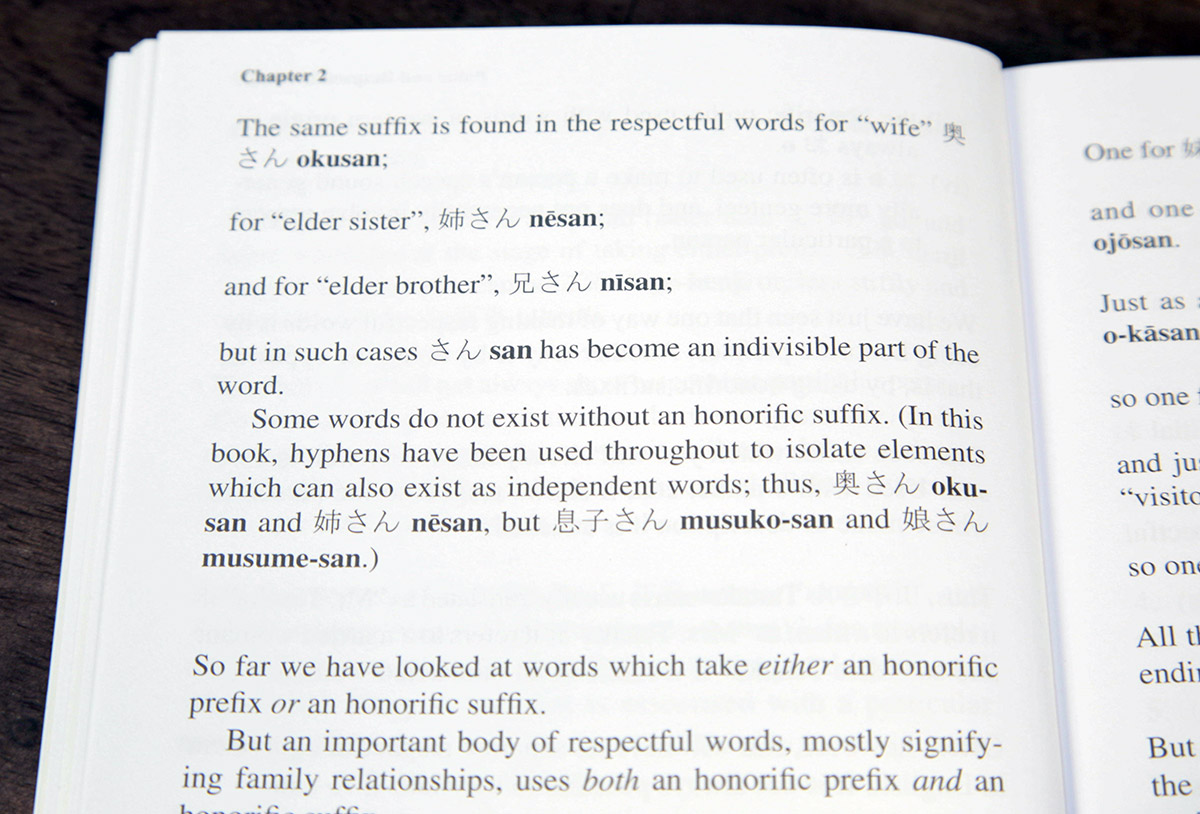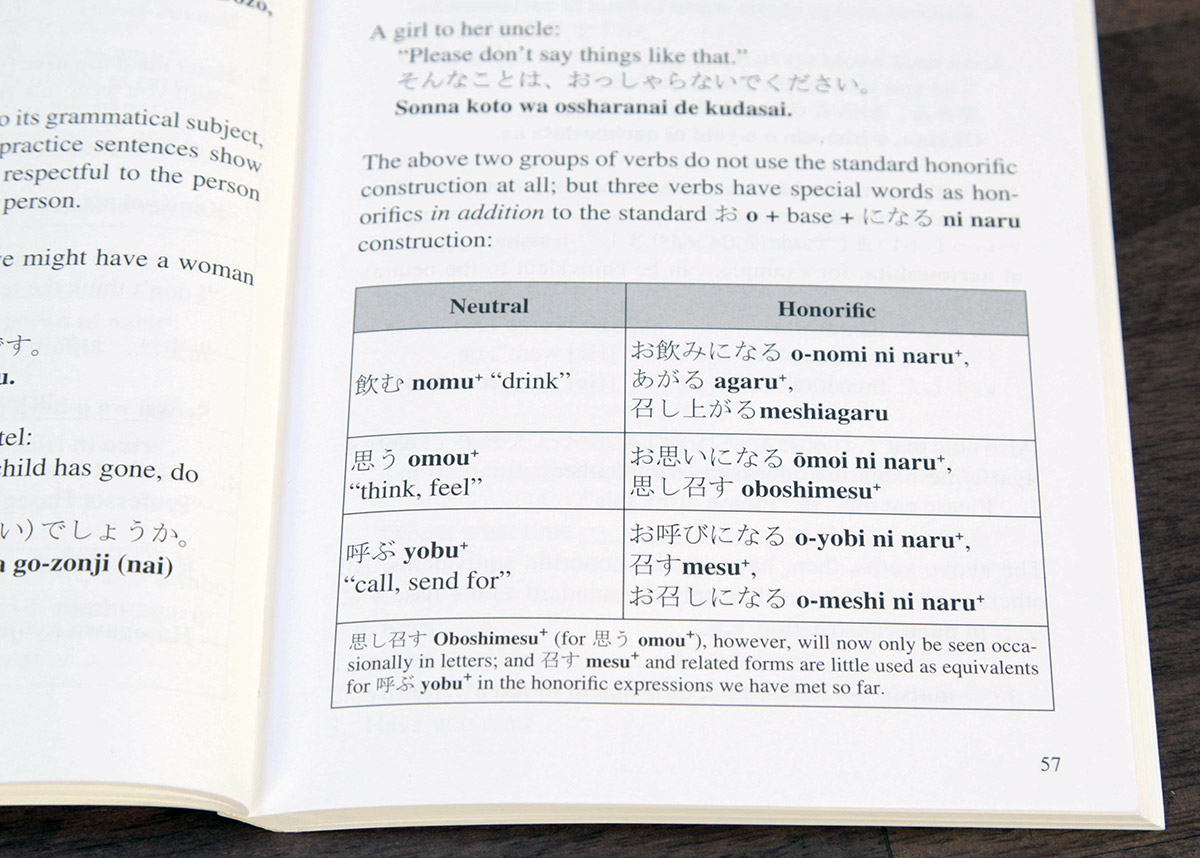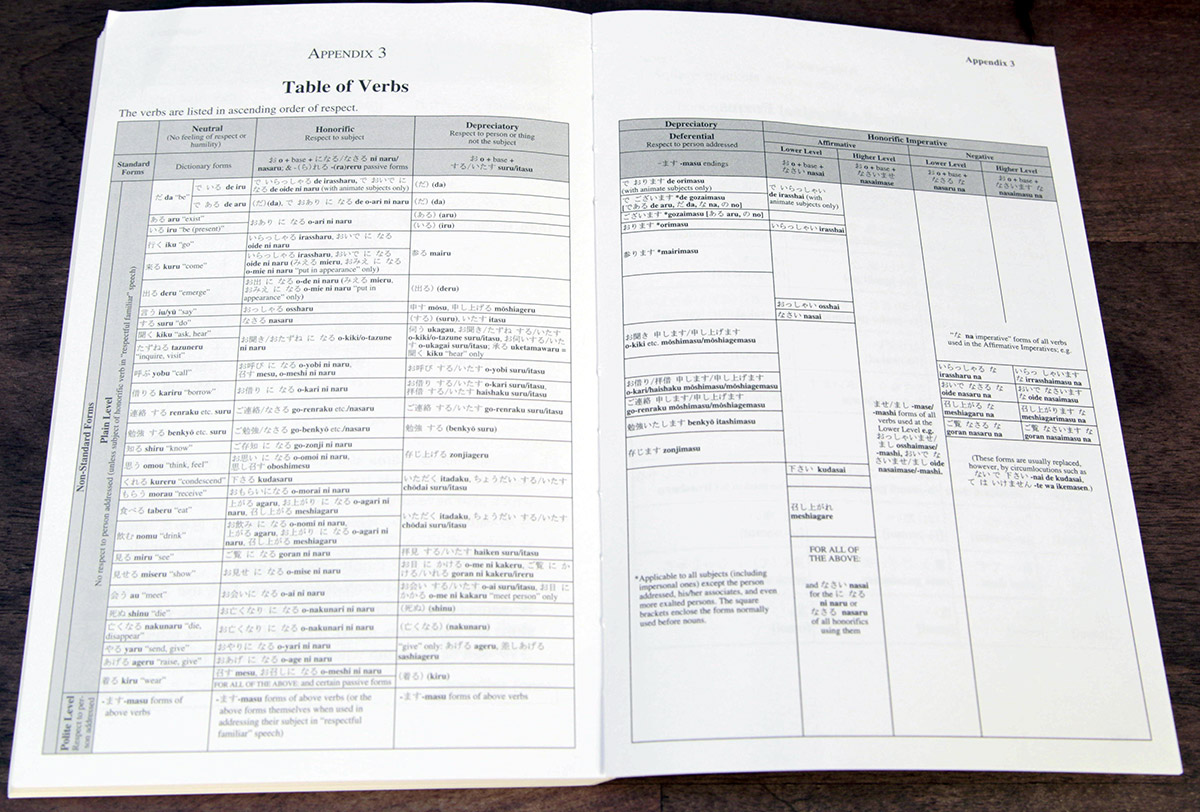Japanese respect language, or keigo 敬語, can be a very useful when speaking to and about bosses, higher ups, coworkers, etc. without sounding like a rude jerk in Japanese. In Japan, a new guide comes out every year explaining the ins and outs of this complicated language, so I took a look at an English language book called Japanese Respect Language: When, Why, and How to Use it Successfully by P.G. O'Neill, to see how our own guides hold up in teaching keigo.
First let me say that if you are looking for a beginners guide to respect language, the Genki series does do a better job with simplicity and uses a less muddled format to teach some of what you can learn in this book. However, it only goes over Honorific verbs, nouns and adjectives, and what it calls extra-modest and humble expressions (deprecatory verbs in this book). If you have never had any contact with respect language before I would suggest learning the basics from whatever textbook you are most comfortable with before delving into this book.
Japanese Respect Language is intended for Japanese learners who are already at what we call the intermediate level. This basically means that you need to understand the basics of Japanese grammar before jumping in. It would also help if you knew a little bit about keigo before using this book. Although it does make the claim that you do not need any prior keigo knowledge, after thoroughly reading through it I have to disagree on that point.
The reason being, the guide explains the basics using convoluted language, formatting, and overly complicated charts. While there is a reason for the madness, the later and more complicated information regarding respect "directions" (levels of respect) as well as understanding deferential verbs, kind of requires you to get this type of explanation, for someone new to keigo, this would seem like a nightmare. I very strongly recommend learning the basics from whatever learning tool or textbook you are already using first, then using this book to supplement your understanding of respect language.
It covers the following information:
- Basics Nouns
- Honorific Verbs
- Depreciatory Verbs
- Deferential Verbs
- Imperative Forms
- Adjectives
The formatting almost reminds me of a stream of consciousness novel. Sentences explaining how to use words are interrupted by examples, charts, and make the entire point of the sentence hard to follow. The formatting is so bad that some people have mistaken it for spelling or editing errors, but it really is just bad formatting decisions. Take a look:

Once you get used to it, if becomes a little more bearable, but the language is so scholarly, that simple concepts become difficult to understand. I found myself having to reread sections in order to understand what was being explained. The saving grace are the charts compiling everything you just read in detail at the end of the chapter or section. So even if you just get the gist of the lesson, you have a handy list at the end showing what you were supposed to learn.

Every chapter ends with practice sections and practice tests which are the real gem of this book. The only problem being that the answers are usually right under the questions on the very same page. They aren't even upside down, so if you are stuck thinking about the correct answer, it can be difficult to keep your eyes from wandering an inch down the page to the answer. I can't help but think, because this book already has appendixes included in it, that putting the answers at the end of the book would have been a better idea. But so far the formatting choices are the real weak point of this book.

After all of the lessons there is a final, larger practice section with exercises, then a review exam. The appendices contain all of the previous charts in one convenient place, though appendix 3, the table of verbs is very small in comparison to the rest of the text in the book, and it can be a bit hard to read for people who have trouble reading small fonts.

Japanese Respect Language - Verdict
In the end, this is not a book you should sit down and read all at once. Like the book itself suggests, if there is a section you are interested in, you should read that section and save the rest for a later date. And one read through will not magically enable to you be a master at keigo. However, as far as English language keigo lessons go, it's really in depth and covers just about everything an intermediate Japanese language learner could ever want to know. If you can get past the strange formatting I believe this book can be very useful.
Kristen’s Review
While there is quite a bit to be gained from this book, I don’t think it can really hold a candle to the Japanese language resources available out there. New books come out every year as the culture and language surrounding social hierarchies change. If you’re joining a company, and you need something small, convenient, and English, this is probably a good pickup. But for anyone else, if your level of Japanese is at the point where you want to dive into respect language, I’d go elsewhere.
